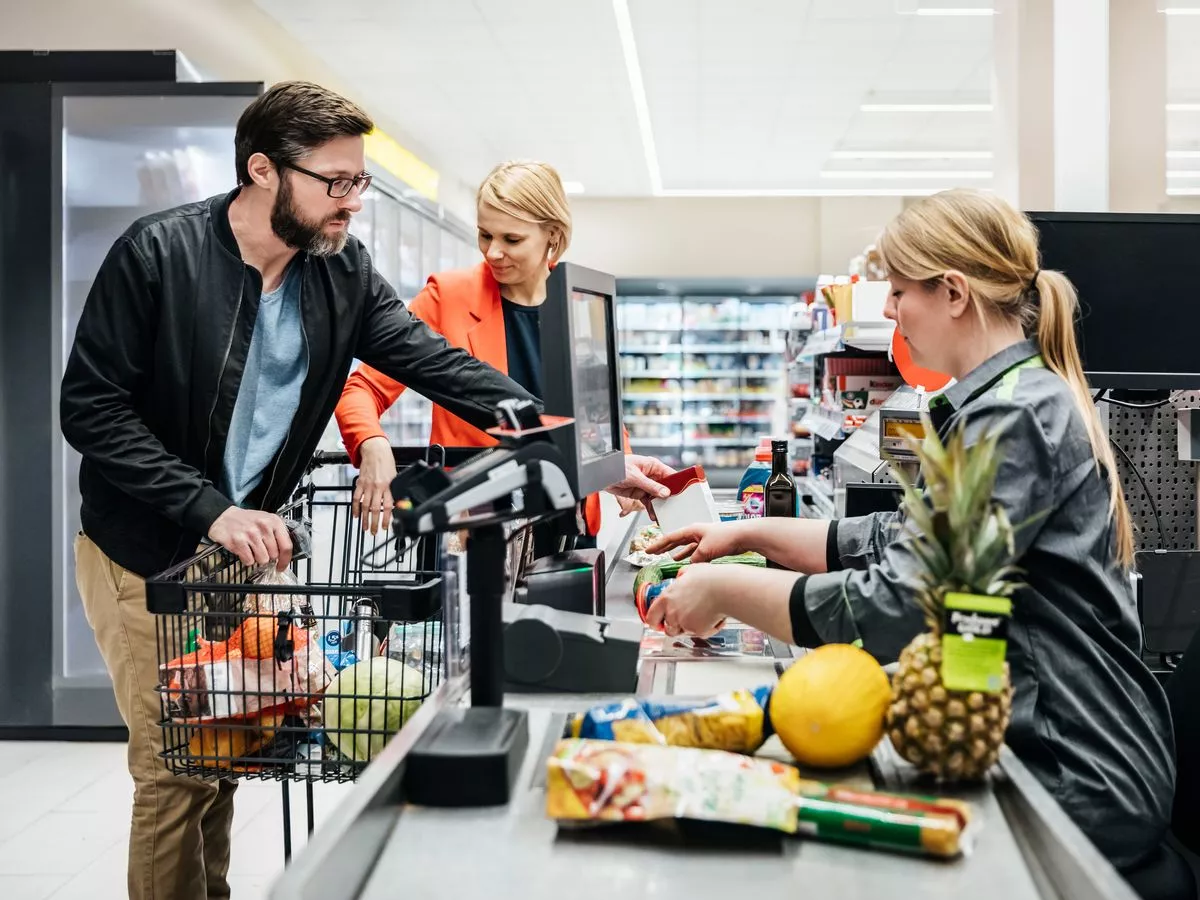By Ben Hurst
Copyright manchestereveningnews

Anyone using a supermarket could find a major change at the checkout within months if plans to change the way tills operate are put into action. People going to Tesco , Aldi, Sainsbury’s Morrisons and Asda could find they will be able to pay for the weekly shop more easily as a result. Currently if a bill is more than £100 people will need to take further action such as using chip and pin. The Financial Conduct Authority (FCA) said it wants to give card providers the flexibility to decide the right limit for them and their customers. This could mean people having more convenience to “tap and go” when making bigger payments – and it is thought that it could lead to improvements in the economy. Under the plans esco, Aldi, Sainsbury’s Morrisons and Asda would be able to decide for themselves how much people would be allowed to pay – and the consultation period on the plans ends on October 15. The consultation document said: “We propose replacing the current regulatory limits with a new exemption, which would allow (payment services providers) to process contactless payments where they identify the risk of a payment transaction to be low. “(Payment services providers) can still set or maintain contactless payment limits as they see fit in line with their business and customer needs and in compliance with regulation.” It continued: “Our approach is designed to allow (payment services providers) to take a risk-based approach to contactless payments, while also giving them greater flexibility to manage that risk, including though the ability to set their own contactless limits.” The regulator said that while it anticipates firms are unlikely to make significant changes to their contactless limits in the short term, and that they will only do so if there is a low risk of increased fraud, some firms could potentially increase or remove their limits, which could heighten the risk to consumers. Existing rules stipulate a £100 limit for any single contactless card transaction, and a cumulative total of £300 in contactless transactions or no more than five consecutive contactless transactions since the last application of “strong customer authentication” to verify a payment was made. Modelling in the document estimates that if payment services providers raised both their single and cumulative limits to £150 and £450 respectively, fraud could increase up to a maximum of £31.3 million per year over three years, which would be a 131% increase on the current contactless fraud rate. The consultation document said: “However, we consider it highly unlikely that this fraud scenario would be realised,” adding that this was “presented as a worst-case scenario”. The regulator emphasised that while firms could increase or remove contactless limits “they would only be permitted to allow contactless payments where they have identified a transaction to be low risk and they would still be liable for reimbursement”. “They are therefore incentivised to maintain low levels of contactless payments fraud.” Another issue is that many point of sale terminals in the UK are programmed to decline contactless payments at £100. The consultation document added: “Respondents have expressed limited appetite to bear implementation costs at the present time.” Many card providers already offer customers the ability to adjust their personal contactless limits or turn off contactless functionality on their card altogether. The FCA said it is encouraging firms to continue to offer their customers this choice. David Geale, executive director of payments and digital finance at the FCA, said: “We’re seeing smarter payment technology and more well-established fraud controls, so it’s the right time to let firms tailor contactless payments to fit their customers’ needs and drive innovation. “While we wouldn’t expect to see immediate changes to limits by firms, they would have the flexibility to make payments more convenient for customers. “People are still protected. Even with contactless, firms will refund your money if your card is used fraudulently.” The FCA said it recognises that certain consumers could be impacted by contactless changes more than others. It said that under Consumer Duty, firms are expected to be able to identify and take appropriate action where particular groups of customers such as those with characteristics of vulnerability or those with protected characteristics under the Equality Act 2010 receive systematically poorer outcomes. Data from UK Finance found that 82% of contactless transactions are below £25 and more than 90% of contactless transactions are below £50. The spread of these transactions may be considered by firms in deciding whether to change their limits, the regulator said. A spokesperson for UK Finance said: “We welcome the FCA’s proposal to allow firms greater flexibility in how they manage contactless payments. For customers, we don’t expect to see any immediate changes to the £100 contactless limit. “Firms may consider changes to background limits, such as how often a Pin is required, but any changes will be made thoughtfully with security at the core. “Unauthorised fraud losses are protected against and our data shows that customers are fully refunded in more than 98% of cases. The industry will work with the FCA to take this new proposal forward in a way that delivers the best customer experience when making payments.” Graham Mott, director of strategy at cash access and ATM network Link said: “Our research shows that for most adults, paying by digital is now the default with adoption of digital wallets alongside contactless cards, the preference for most UK banking customers. “More than half of people no longer carry a physical wallet with them when they leave home. While the proposed changes may provide greater convenience and complement contactless limits for digital wallets, our data does show that two-thirds of people have experienced issues when making payments. “It is therefore important that people are prepared and aware of what they can do to avoid disruption in the event of payments systems being interrupted.” According to consumer spending data from Barclays, a record 94.6% of eligible in-store card transactions were contactless in 2024. Last year, there were 10 times as many contactless transactions per month than there were in 2015, Barclays added. Gabby Collins, payments director at Lloyds Banking Group, said: “Lloyds, Halifax and Bank of Scotland customers can already set their own contactless payment limits in our apps – in £5 steps, up to £100 – and we’re absolutely committed to keeping that flexibility.” Riccardo Tordera Ricchi, head of policy and government relations at The Payments Association, said: “Card payment limits shouldn’t be dictated by legislation but instead set by card providers and consumers based on their individual risk appetite and payment preferences.”



